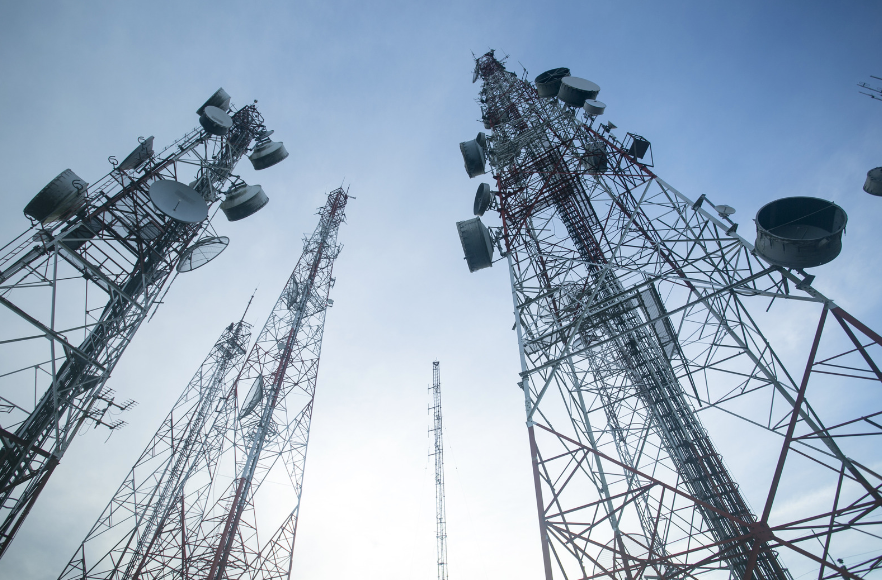Printed circuit boards play a critical role in our advanced age of information technology, and telecommunications has become nearly synonymous with the PCBs that power them.
The world has come a long way since the age of telephone operators where people would line rows of desks connecting one call to another. Today, the Bureau of Labor Statistics estimates that just 5,000 workers in the United States are still classified as telephone operators, with many of these jobs expected to disappear in the coming decades.
The functionality of massive switchboards has followed the trend of virtually all consumer electronics: miniaturization. Calls and communications can now be placed across the world with little delay thanks to cell towers, satellites, and servers latticing the globe. Yet the speed at which we can communicate takes a tremendous amount of processing power – thus, the PCBs that power telecommunications must be reliable, durable, and above all else, functional.
In this blog, we examine the applications of printed circuit boards in telecommunications, the issues these boards need to resolve to maintain functionality, and how PCB manufacturers address the technical problems these boards need to solve.
Printed Circuit Boards and Telecommunications
With the diverse methods with which we stay in communication with one another, printed circuit boards play a critical part in our day-to-day lives. Some of the many applications of telecommunications PCBs include:
- Voice over Internet Protocol (VoIP) Devices
- Electronic Data Storage Devices
- PBX Systems
- Wireless Communication Systems
- Mobile Phone Tower Systems
- Satellite Systems
- Digital and Analog Broadcast Systems
- High-Speed Servers & Routers
With so many different applications, it might seem impossible to summarize the similarities that telecommunications PCBs share. However, some generalizations can be made.
First, many telecommunications printed circuit boards need to operate in extreme temperatures. Cell towers and satellites are often subject to extreme fluctuations in temperature, and printed circuit boards for these applications must account for these conditions or risk operational failure.
Second, these boards need to be able to deliver signals without distortion. Telecommunications printed circuit boards are subject to a higher degree of noise influences and conflicting signals, and as boards continue to grow smaller, signals have a greater likelihood of distortion.
Finally, these printed circuit boards often must fit in unconventional spaces. From satellites to wearable technology, the shapes that these boards must fit within may not be a traditional square that you might typically find. They may also be subject to heavy vibrations, and cannot rely on rigid forms.
With these constraints in mind, we now turn to how printed circuit board designers and manufacturers go about solving these issues to ensure a clear, fast, and reliable signal in the devices that connect the world.
Problems Printed Circuit Boards Must Address in Telecommunications
How does a printed circuit board in telecommunications go from design to execution? PCB experts generally start with the end in mind. What conditions will a printed circuit board operate in? By considering the most extreme applications that a board must handle, the design can expand outward from there.
Software vs. Hardware
One initial consideration that needs to be made when manufacturing printed circuit boards for telecommunications is the amount of hardware you want to include in a design. Weight is critical in PCB manufacturing as miniaturization has taken over the field.
Overreliance on software to fulfill components that can be accomplished through hardware can make networks more susceptible to security risks. Hardware components are easier to debug, work with analog signals, and crucially, are less likely to fail. However, hardware can’t be updated, is harder to troubleshoot when it fails, can cost more materially, and take up more space.
As we will see, the conditions that printed circuit boards need to tolerate can often be extreme, and many PCBs for telecommunications need to be placed in small or oddly shaped compartments. The PCB design is thus constrained not only by its ability to operate but by the space and conditions of its operating environment.
Material Selection
Most boards are manufactured using a standard FR-4 material consisting of glass fiber and epoxy, which is laminated with copper foil. While these boards have good heat resistance and nearly no water absorption, they aren’t designed for the high-temperature PCB applications that many telecom PCBs need to operate properly.
Polyimide PCBs are popular in this industry as they can handle a variety of conditions that standard PCBs cannot. They have high thermal stability, being able to handle temperatures of up to 260°C without cracking or melting, and have resistance to corrosive chemicals that can erode or damage a printed circuit board.
Aluminum is another popular choice for telecom PCBs, as they are lightweight and have excellent heat resistance that is superior to FR-4 PCBs.
Signal Integrity
A basic printed circuit board can normally function with little interference from other devices. However, as boards are now being pushed to operate faster than ever in smaller packaging, high-speed PCB design has had to contend with signal noise that hinders the operation of telecommunication devices.
Once printed circuit boards operate at speeds greater than 50MHz, the shape of a signal will begin to change, degrading the signal-to-noise ratio. Signal integrity issues can also occur when other signals from outside a printed circuit board influence a printed circuit board.
For telecommunications, this can amount to a big problem. During the design phase, signal integrity issues must be addressed by alternating the signal, power, and ground layers to create a low-impedance return. The trace on a printed circuit board also needs to utilize consistent spacing and length in differential pairs to maintain a quality signal.
Simulating real-world scenarios to ensure signal clarity often occurs even before the prototype stage to identify potential issues. Signal integrity is critical in printed circuit boards for telecommunications, and failing to catch these errors early can be disastrous.
Standards of Quality for Printed Circuit Boards in Telecommunications
Given the importance that printed circuit boards have in telecommunications, and how vital our need to be connected has become, finding a manufacturer with a proven record of success is of the utmost importance. Thus, it is highly recommended that you find a PCB manufacturer qualified to make Class 3 certified boards, especially when they are used for aerospace or military applications.
This classification of printed circuit board has a proven record of reliably operating in the harshest conditions without sacrificing operational efficiency. With more rigid rules and requirements around the creation of these boards such as cleanliness requirements, component placement, and operational oversight, a Class 3 PCB outperforms other circuit boards.
Shape
One final consideration that needs to be made with telecommunications printed circuit boards is the shape that they need to fit into.
Flexible printed circuit boards, like the polyimide PCB mentioned above, are ideal for unusually shaped casings that can’t fit a normal rigid PCB into their frame. A flexible printed circuit board is, true to its name, able to twist and bend into the shape it needs to fit into.
Not only is this a great way to get more surface area onto a printed circuit board, but it is also better at handling vibrations that might happen in aerospace applications like satellites.
Telecommunications Printed Circuit Boards at Imagineering
Printed circuit boards designed for telecommunications purposes require careful planning and a manufacturer that you can trust to deliver the highest caliber of results. When you are looking for a partner you can trust, choose Imagineering.
Imagineering specializes in fabricating and assembling the highest quality Class 2 and Class 3 printed circuit boards. Following the standards of our AS9100D certification, we partner with clients across industries, including telecommunications, aerospace, military, and medical spaces, to deliver best-in-class printed circuit boards on time, every time. Our results speak for themselves. To learn more, contact us and get a quote on your next PCB fabrication or assembly.

